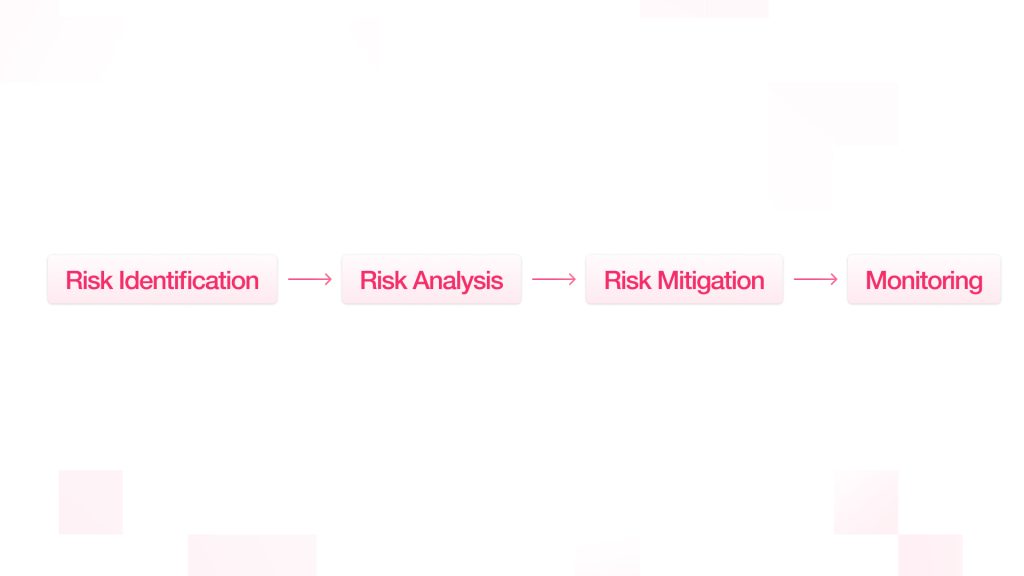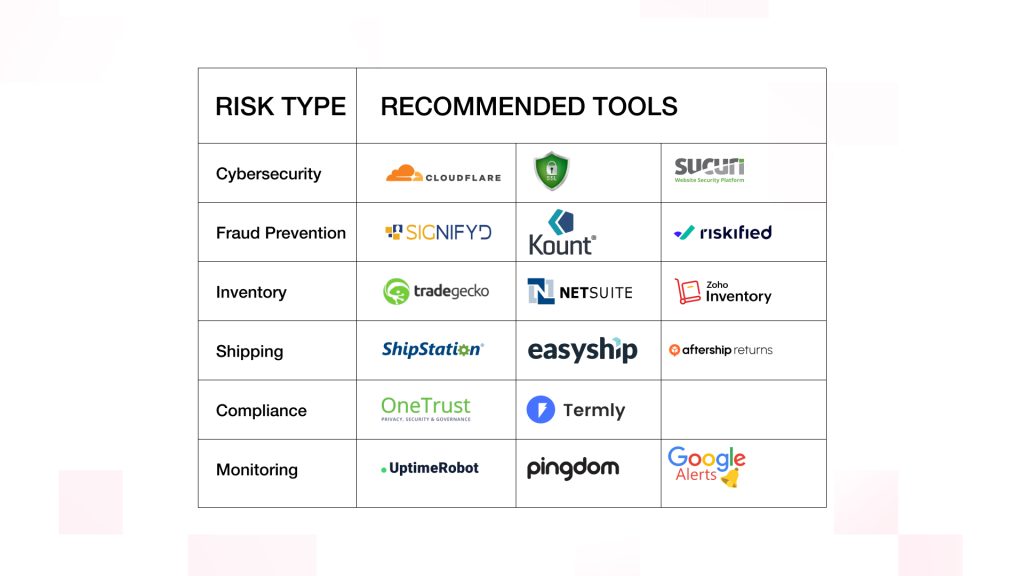Ecommerce Risk Management: How to Avoid Costly Mistakes

Starting an ecommerce company may seem like a pipe dream from the outside—gorgeous product images, a checkout that beeps with each transaction, and customers adding products to their cart quicker than you can say “free shipping.” But on the other side of that shiny storefront? There’s a battlefield you don’t know about, where Ecommerce Risk Management becomes crucial to survive and thrive.
Fraud, server crashes, late shipments, legal headaches there they are, waiting in the wings to mess with your margins and reputation.
Whether you’re just launching on Shopify or managing a Magento-based empire, here’s what we know: risk management is no luxury, but survival. The brands that grow are those who prepare, plan, and prevent the worst from occurring.
So how do you reveal the hidden dangers and protect your business from a messy, costly collapse?
That’s what we’re getting into. No jargon, no fearmongering just good advice, real-world scenarios, and tactics that work.
Let’s dissect it all simply, intelligently, and without the hype.
What is Ecommerce Risk Management?
Essentially, ecommerce risk management is a process of risk identification, analysis, and mitigation that aims to bring online business operations back on track whenever any risks occur. These may range from cyber-attacks and payment fraud to stock problems and delivery mistakes.

But it’s not merely a matter of staying out of trouble, it’s a matter of being ready for it, so your brand can make a quick and smart turn.
Need a future-proof Ecommerce store?
Our Experts Can Help!
Why Ecommerce Risk Management Is Important
Here’s the harsh reality: One misstep in the world of ecommerce can cost you thousands, if not tens of thousands. Here’s what bad risk management can do:
- Data breaches that destroy customer trust
- Chargebacks on fake transactions
- Shipping delays that scare customers away
- Stockouts that cost you revenue
- Compliance penalties for failing to comply with legal requirements
Imagine driving a car without brakes down a foggy road. You may travel quickly but you won’t travel far.
Top Ecommerce Risks You Need to Overcome
Let’s take a closer look at the most prevalent ecommerce risks and how to sidestep them like a pro.
Cybersecurity Threats: The Invisible Enemy
Hackers adore ecommerce. Your website is a treasure trove of personal information and credit card numbers. A single data breach can lead not only to loss of customer trust but also lawsuits and regulatory issues.
How to Steer Clear of It:
- Utilize SSL certificates to encrypt customer information
- Implement firewalls and security plugins
- Implement strong password policies for employees
- Update software and plugins frequently

Don’t forget to back up your data weekly or daily, if possible. When disaster strikes, a backup is your best friend.
Chargebacks and Cardholder Payment Fraud
It’s the worst horror a seller has when selling things on the net. Someone who steals card numbers makes a purchase with them and gets the money refunded by legitimate protesting that he/she never bought the item or product. You lose the customer, the merchandise, and, occasionally, your money.
Tips on How Not to Get Cheated:
- Use payment gateways which possess anti-fraud features
- Use CVV verification in every card purchase
- Use Address Verification System filters
- Watch for order suspicious behavior (e.g., orders that are too large or mis-matched billing/shipping addresses)

Inventory Management Blunders
You’re selling a cool new fad product, customers come flooding in, and then… it’s sold out. Or worse, you overstock and lose money on excess inventory. Either way, lose-lose.
How to Avoid It:
- Integrate your inventory system with your site
- Use inventory notifications to flag low or excess stock
- Regularly audit to keep your information up-to-date
- Foresee demand through sales history
Even better utilize AI-based solutions that foresee trends and restock themselves.
Shipping and Fulfillment Errors
Slow delivery and lost packages are more than mere logistics mistakes they damage your reputation and make you lose repeat business.
How to Avoid It:
- Deal with credible courier agencies
- Give customers real-time order tracking
- Maintain a buffer stock to avoid last-minute chaos
- Always provide clear shipping timelines
Transparent communication is key. If delays happen, notify your customers immediately, it builds trust even when things go wrong.
Legal and Compliance Risks
From privacy laws to tax regulations, online businesses must navigate a maze of legalities. Slip up, and you’re not just losing money you could face legal action.
How to Prevent It:
- Ensure GDPR, CCPA, or local data compliance
- Clearly post terms and conditions and return policies
- Charge and remit sales tax correctly
- Consult with legal professionals before expanding into new markets
Also, regularly review your privacy policy. Laws evolve, and so should your policies.
Negative Reviews and Poor Customer Experience
Your reputation is your brand. One negative review on Google or Trustpilot can deter hundreds of potential customers.
How to Prevent It:
- Address complaints promptly and professionally
- Provide simple returns and refunds
- Optimize your site for mobile and speed
- Personalize the shopping experience with AI technology

Excellent service is your quiet shield against customer churn.
Technology Failures
Site goes down in the middle of a sale? Bust checkout page? Payment gateway flaws? That’s lost business plain and simple.
How to Avoid It:
- Invest in fast-performance hosting
- Conduct routine speed and function tests
- Use redundant systems (so if one fails, a second takes its place)
- Use tools like Pingdom or Uptime Robot to monitor uptime
- Never launch a big campaign without first testing the load capacity of your site.
Need Reliable Web Development partner to help grow your Business?
Our Experts Can Help!
How to Build a Risk Management Strategy That Works
Risk avoidance isn’t all about rocking the coolest toys it’s being prepared with an actual plan that works when life gets crazy.
Consider that you’re preparing for a road trip. You wouldn’t simply fill ‘er up and cross your fingers. You would check the forecast, plan the route, and perhaps even throw in a spare tire and granola bars “just in case.”.
That’s ecommerce risk management. It’s not being reactive; it’s planning with intention. Here’s your step-by-step guide to doing it correctly:
Risk Identification – Spot the Trouble Before It Hits
Begin by brainstorming every potential risk that might throw a monkey wrench into your operations. This is not a lone task get input from throughout your business. Consult with your marketing department (they’ll understand what customers are complaining about), your coders (they’ll identify system vulnerabilities), logistics (hi, shipping delays), and customer support (they’ve heard everything).
Categorize risks into two groups:
- Internal risks: Such as website crashes, employee errors, or stock miscounts.
- External risks: Payment scams, market volatility, supply chain interruptions, or unexpected policy change from your online marketplace.

Tip: Don’t think too visibly. What won’t let you sleep? That’s a clue.
Risk Analysis – Dichotomize the Serious and the Shrug-Offs
You have your list, now it’s time to make the “perhaps” and “must address” distinction.
Ask two fundamental questions:
- Likelihood: How frequently is this likely to occur? Every day? Once a year?
- Impact: If it does occur, how severe is it? A small hiccup or a complete crisis?
- Plot these on a basic 2×2 risk matrix:
- High Likelihood + High Impact = Red alert
- Low Likelihood + Low Impact = Monitor it
This assists you in prioritizing your time and budget on what is truly important.
Risk Mitigation – Build Your Safety Net
Okay, now that you know what risks are most important to you, it’s time to take action. This is where strategy meets action.
You have four choices:
- Avoid the risk If it seems too risky, don’t do it. Example: Avoid shady third-party apps with bad security.
- Transfer the risk Insurance, third-party logistics companies, or secure payment processors can absorb some of the risk.
- Reduce the risk Put guardrails around things. Consider two-factor authentication, stable hosting, automatic backups, or educating your employees on scams and SOPs.
Accept the risk Some small risks aren’t worth losing sleep over. Just keep them in mind.
Don’t only cure the issue stop it before it occurs.
Review and Monitor – Make It the Norm, Not the Exception
Ecommerce shifts rapidly. A minor risk in the previous quarter can become a potential weak point.
So, perform risk management like a regular health check.
- Run regular monthly or quarterly reviews.
- Review any incidents or near misses. Adjust your tools, policies, and team training accordingly.
- Track KPIs like return fraud rates, server downtime, or complaint spikes.
- Set up alerts, dashboards, and simple checklists so you’re not caught off guard.
Tools and Tech to Make It Easier
Here’s a quick list of tools to help manage ecommerce risks:
| Risk Type | Recommended Tools |
| Cybersecurity | Cloudflare, Sucuri, SSL.com |
| Fraud Prevention | Signifyd, Kount, Riskified |
| Inventory | TradeGecko, NetSuite, Zoho Inventory |
| Shipping | ShipStation, Easyship, AfterShip |
| Compliance | OneTrust, iubenda, Termly |
| Monitoring | UptimeRobot, Pingdom, Google Alerts |

Looking for a technical partner to help integrate the best technology in your Ecommerce store?
We Can Help
Final Thoughts: Risk-Proofing is Profit-Proofing
Every online business owner wants to see skyrocketing sales, rave reviews, and a loyal customer base that keeps returning. But here’s the thing none of that holds if your company is being kept together with duct tape and hope.
Without a proper risk management strategy, you’re building your dream store on shifting sands. A single cyber-attack, a supply chain glitch, or a regulatory slip-up can make your success story a nightmare.
Risk management isn’t about paranoia it’s about being proactive. It’s the difference between responding to madness and walking into it with a clear head. This allows you to scale without continually looking over your shoulder.
It’s not all about playing defense to avoid expensive errors. It’s about making forward-thinking, wise choices that guard your margins, your customer trust, and your future growth. Because yes, risks will occur unplanned returns, payment scams, shipping holdups, platform downtime. That’s the reality of ecommerce.
But with the correct systems, policies, and mind state in hand? You’ll ride them out like a boss. You’ll turn on a dime rather than freak out. You will maintain your ecommerce motor going rain or shine, Black Friday bump, or life-changing curveball.
If you aren’t yet considering ecommerce risk management as a business priority, get with it already. Every smart business owner already knows it’s much better to seal a hole before the ship begins to flood.
 Shopify
Shopify

















